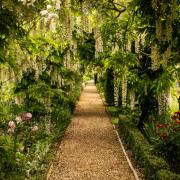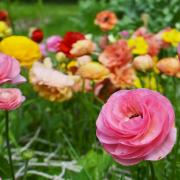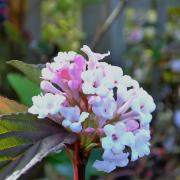July gardening tips from plant expert Keith Clouting of Taverham Nursery Centre
There are many fabulous geraniums which grace our gardens throughout the summer; these hardy, undemanding plants also provide food for pollinating insects as well as delighting us with their long-lasting floral display. One long-flowering species is the geranium cinereum group which has seen a new series called ‘Jolly Jewels’ released over the last few years.

Bred in the Netherlands by Marco van Hoort, these compact cushion-forming geraniums have their first flush of flowers in April then continue sporadically throughout the summer. All the varieties are worthy of a space in the garden but my personal favourites are G.c. ‘Jolly Jewel Salmon’, because its orange- salmon flowers are an unusual colour for a geranium and it really caught my eye when I first saw it; ‘Jolly Jewel Night’ is also very striking with its bright cerise flowers with a dark maroon centre.
Another unusual colour is ‘Jolly Jewel Coral’ which has deep, coral-pink flowers which, like the others in the series, has beautiful veining in the petals. They are also evergreen so their ornamental foliage persists throughout the winter. These geraniums have a height and spread of around 25-30cm, making them suitable containers and rockeries as well as at the front of the border; they grow well in most good garden soil in sun or part shade.

Plant of the month
Romneya coulteri
Commonly known as the Californian Tree Poppy, this semi-herbaceous shrub was introduced in the late 19th century. It produces stems up to around 2.4m which are adorned by attractive, deeply cut grey-green leaves which, in spring and early summer, are topped with large showy white flowers with crinkly, paper-looking petals set off by a delightful centre of yellow stamens. Romneya enjoy a sunny position and although tolerant of most good soil it’s best to prepare the planting spot well with organic matter before planting to give them a good start. Leave plenty of space as they can be quite vigorous and even invasive when established but resent being moved. Mulch well in winter then in spring cut back the stems low down to form a framework from which the new growth will shoot.

Ask Keith
We have two stone urns by the front door which are in full shade; what can we plant for all-year interest?
When planting containers try to pick plants which will be in proportion to the container size, I like to plant in 3 layers, for a centre feature a mini standard evergreen such as Ilex, Euonymus or Choisya would work well in the shade alternatively try a columnar shrub such as Taxus baccata ‘Standishii’ or an upright Euonymus. For the second layer plants with colourful leaves like Heucheras provide colour all year round as do small shrubs such as Skimmia ‘Magic Marlot’ which has variegated leaves and red buds through the winter which open to cream scented flowers in spring. Some grasses like the golden Carex ‘Everillo’ also add brightness for shade. For the trailers round the edge Ivies work well but perennials like Lamium maculatum, lysimachia nummularia aurea or Ajuga add flowers as well as leaf colour. If you would like extra flowers throughout the year under plant with bulbs and add bedding plants seasonally.
Catch up with Keith
Cut back hard perennial herbs such as fennel, marjoram, sorrel and lovage they will grow back in 2-3 weeks with a crop of fresh leaves.
Prune the shoots of grape vines back to two leaves from the last bunch to direct energy to the fruit.
Pick runner beans regularly to prevent them becoming stringy, leaving mature pods on the plant will reduce flowering and cropping.
Hanging up yellow stick traps in the greenhouse gives a good early warning of pests and also helps reduce numbers.
If necessary prune early summer flowering shrubs such as Deutzia, Philadelphus and Weigela as soon as they have finished flowering.




























